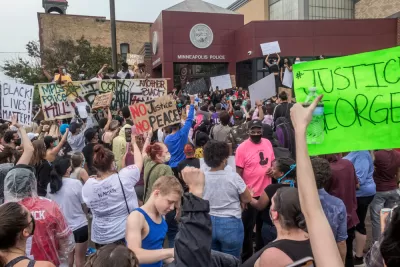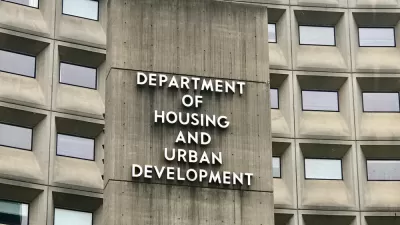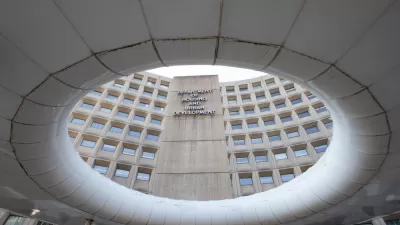The nation's fair housing policies are built on a foundation of assumptions that neglects the community and culture of low-income neighborhoods.

Edward G. Goetz, Anthony Damiano, and Rashad Williams explain the work of a coalition called Equity in Plan to shift the discussion about fair housing in the Twin Cities. According to the article, Equity in Place (EIP) has shifted the discussion about fair housing with a simple question: "Why do we think moving to white neighborhoods will solve our problems?"
The question has its roots in the fair housing battles surrounding disparate impact and affirmatively furthering fair housing, which attempt to overcome a history of discriminatory planning and development policies that concentrated public housing resources in areas of high poverty. EIP makes the case that the fair housing narrative neglects the communal and cultural identity of these neighborhoods.
"EIP first emerged in 2013, in response to the Metropolitan Council’s decennial regional plan, Thrive MSP 2040," according to the article. The regional plan was built on a "a Fair Housing Equity Assessment that, in accordance with HUD’s directives, emphasized the identification of both 'racially concentrated areas of poverty' (RCAPs, later amended by HUD to RECAPs—racially/ethnically concentrated areas of poverty) and 'high opportunity areas,'" according to the article.
EIP organizers created a three-pronged response: regarding narrative, EIP wanted to challenge the dominant storyline that portrays RECAPs as the central problem of regional equity; in policy terms, EIP wanted to challenge the dominant housing strategy that focused on moving people to “opportunity neighborhoods”; and, in political terms, the group demanded a place at the table for low-wealth communities of color when decisions about those communities are being made. Most fundamentally, EIP wanted to redefine regional equity in ways that include “building the economic, cultural, political, human and social capital of the places people of color already call home”
"Between 2013 and 2020, a central element of EIP’s work was investigating the unstated assumptions of this opportunity framework and expressing them in easily understood language," according the article.
A lot more detail on the fruits of that work is included in the source article.
FULL STORY: ‘Opportunity Areas’ Shouldn’t Just Be Places With A Lot of White People

Maui's Vacation Rental Debate Turns Ugly
Verbal attacks, misinformation campaigns and fistfights plague a high-stakes debate to convert thousands of vacation rentals into long-term housing.

Planetizen Federal Action Tracker
A weekly monitor of how Trump’s orders and actions are impacting planners and planning in America.

In Urban Planning, AI Prompting Could be the New Design Thinking
Creativity has long been key to great urban design. What if we see AI as our new creative partner?

King County Supportive Housing Program Offers Hope for Unhoused Residents
The county is taking a ‘Housing First’ approach that prioritizes getting people into housing, then offering wraparound supportive services.

Researchers Use AI to Get Clearer Picture of US Housing
Analysts are using artificial intelligence to supercharge their research by allowing them to comb through data faster. Though these AI tools can be error prone, they save time and housing researchers are optimistic about the future.

Making Shared Micromobility More Inclusive
Cities and shared mobility system operators can do more to include people with disabilities in planning and operations, per a new report.
Urban Design for Planners 1: Software Tools
This six-course series explores essential urban design concepts using open source software and equips planners with the tools they need to participate fully in the urban design process.
Planning for Universal Design
Learn the tools for implementing Universal Design in planning regulations.
planning NEXT
Appalachian Highlands Housing Partners
Mpact (founded as Rail~Volution)
City of Camden Redevelopment Agency
City of Astoria
City of Portland
City of Laramie





























